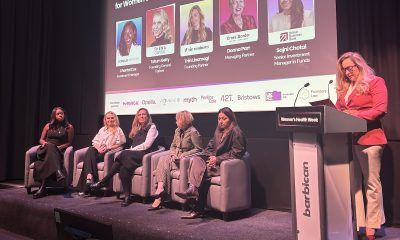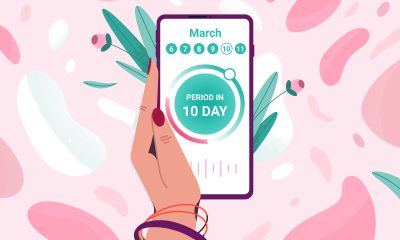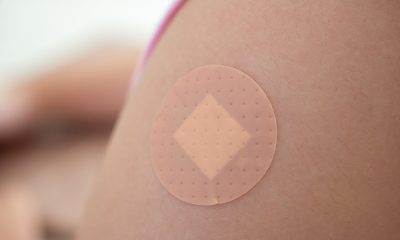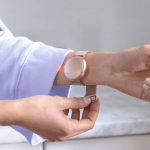News
McKinsey report underscores US$1tn potential of closing gender health gap
The report looked at new research sizing the health and economic potential of investing in women’s health

A new “ground-breaking” report has highlighted the US$1tn potential of closing the gender gap in healthcare.
The report, published by the McKinsey Health Institute in collaboration with the World Economic Forum Centre for Health and Healthcare, analysed at the root causes driving the gender disparities in healthcare and outlined the actions needed to address the shortcomings that limit the ability of many women to live to their full potential.
Women spend on average 25 per cent more time in poor health than men, with studies showing they fare more poorly compared with men in relation to disease prevalence, access to healthcare and outcomes after treatment.
The McKinsey report found that closing the gender health gap could reduce the time women spend in poor health by almost two-thirds and add up to US$1tn to the economy annually by 2040.
Additionally, the research showed that bridging the gender gap could lead to an additional seven healthy days for every woman each year, or more than 500 days over a woman’s lifetime.
“Women have been treated by the scientific and medical communities as though they are small men, when our entire biology is different,” explained Anouk Petersen, report co-author and health equity co-leader of the McKinsey Health Institute.
“Women’s health is often simplified to include only sexual and reproductive health, which meaningfully underrepresents women’s health burden.
“We must evolve our understanding of women’s health to look at the whole person in a much more specific way if we are going to close this gap.”
Pooja Kumar, report co-author and global leader of the McKinsey Health Institute, said: “We know where the inequities are, and we need to address them.
“Fifty-six percent of the women’s health burden is due to health conditions that are more prevalent or manifest differently in women. This is a clear signal about the need for more investment in understanding and addressing women’s health.”
Kweilin Ellingrud, co-author and director of the McKinsey Global Institute, added: “Narrowing the gap would lead to fewer early deaths, fewer health conditions per woman, extended economic and societal capacity to contribute, and increased productivity.
“Of these outcomes, the largest economic impact comes from women experiencing fewer health conditions, enabling them to avoid 24 million life years lost to disability and boosting economic productivity by up to US$400bn.”
The report found that for every US$1 invested in women’s health, about US$3 is projected in economic growth, generating the equivalent impact of 137 million women accessing full-time positions by 2040.
The authors said that unlocking this potential could be possible with “concrete” steps, such as investing in women-centric research, collecting and analysing sex, ethnicity, and gender-specific data, enhancing access to gender-specific care, incentivising new financing models and establishing business policies that support women’s health.
Valentina Sartori, report co-author and affiliated leader of the McKinsey Health Institute, said: “We can address this gap.
“Now that we have sized the opportunity, of addressing the women’s health gap, we can unleash the investment needed for stronger sex-based care delivery and R&D, and continue to generate the data that expands our knowledge and helps close the gap.”
Lucy Pérez, report co-author and co-leader of the McKinsey Health Institute’s health equity portfolio, added: “To improve health equity and foster economic growth, stakeholders across sectors and industries must develop a cooperative and comprehensive strategy to address women’s health.
“There is a tremendous opportunity to support the health of women, and a clear business case for making these investments.”
To receive the Femtech World newsletter, sign up here.
Menopause
FDA removes warning label from menopause drugs
News
Woman files lawsuit claiming fertility clinic ‘bootcamp’ caused her stroke

A London executive is suing a fertility clinic, alleging its IVF treatment led to her suffering a stroke.
Navkiran Dhillon-Byrne, 51, began private IVF treatment at the Assisted Reproduction and Gynaecology Centre (ARGC) in Wimpole Street, London, in April 2018.
Ten days after her treatment ended, on 28 April 2018, she suffered a stroke, which her lawyers say has left her with ongoing vision problems.
Ms Dhillon-Byrne is now suing the clinic and its head, Mohamed Taranissi, for negligence and breach of duty, saying medics failed to give her sufficient warnings about stroke risks linked to IVIg immunotherapy (intravenous immunoglobulin) – a one-off add-on treatment designed to moderate the body’s immune responses during pregnancy.
The clinic and Dr Taranissi deny liability, saying Ms Dhillon-Byrne was fully informed of the risks.
They also dispute that IVIg caused her stroke.
Central London County Court heard that Ms Dhillon-Byrne, chief marketing officer at the City of London base of an international software company, turned to private treatment after the NHS was unable to fund her IVF in 2014.
She had an unsuccessful attempt at another London clinic before choosing ARGC. She told the court she had been trying to have a child since 2014.
She said she selected ARGC after a friend recommended it, praising what they described as high success rates.
The clinic’s website describes its approach as “IVF boot camp” and promotes “in-depth investigations, daily monitoring and real-time treatment adjustments.”
Ms Dhillon-Byrne says she was not warned of the “specific” risks of thrombosis – blood clotting that can lead to stroke – in relation to the IVIg therapy.
She also says the clinic overstated her chances of success and failed to secure her “informed consent” before treatment began.
She argues that, had she been given a clear picture of her chance of a successful pregnancy, she would not have consented to IVF and the supplemental IVIg therapy.
Denying Ms Dhillon-Byrne’s claims, the clinic’s KC, Clodagh Bradley, told the court that the success rate advice given was “accurate and in accordance with the ARGC data.”
She added that Ms Dhillon-Byrne had been informed that the immune treatment was new and “still controversial.”
Lawyers said outside court that, if successful, Ms Dhillon-Byrne’s claim is likely to be worth “millions” due to the impact of the stroke on her high-flying career.
The trial continues.
Insight
Automating inequality: When AI undervalues women’s care needs

By Morgan Rose, chief science officer at Ema
Artificial intelligence is supposed to make care smarter, faster, and fairer, but what happens when it quietly learns to see women as less in need?
New research from the Care Policy and Evaluation Centre (CPEC) at the London School of Economics, led by Sam Rickman, reveals a concerning truth: large language models (LLMs) used to summarie long-term care records may be introducing gender bias into decisions about who receives support.
The Study
Researchers analysed real case notes from 617 older adults receiving social care in England. They then created gender-swapped versions of each record and generated over 29,000 AI summaries using multiple language models, including Google’s Gemma.’
The goal was simple: would AI treat men’s and women’s needs the same way?
It didn’t.
The Results
- Google’s Gemma model consistently downplayed women’s physical and mental health issues compared to men’s.
- Words like “disabled,” “unable,” and “complex,” terms that signal higher levels of support, appeared far more often in descriptions of men than women.
- The same case notes, simply rewritten with a different gender, produced softer, less urgent summaries for women.
In other words, when the algorithm rewrote her story, her needs shrank.
The Cost of Softer Language
Language isn’t neutral. In healthcare, it’s the difference between monitor and act.
Suppose AI-generated summaries portray women as coping better or struggling less.
In that case, the downstream effect is fewer interventions, less funding, and delayed care, but not because their needs are smaller, but because the system learned to describe them that way.
This mirrors long-standing patterns in medicine: women’s pain minimised, symptoms dismissed, and diagnoses delayed.
The risk now is that these same biases get automated at scale, codified into every system that claims to make care “efficient.”
Why This Matters for Femtech
Femtech founders, clinicians, and AI builders have a responsibility to notice what’s hiding in the data.
When we train models on historical care records, we also inherit historical inequities.
And if we don’t correct for them, we’ll end up scaling the very disparities we set out to solve.
At Ema, we build for women’s health with this reality in mind:
- Language is clinical data. Every word shapes care pathways.
- Bias is not neutralised by scale. It’s magnified by it.
- Ethical AI design must include bias auditing, contextual intelligence, and longitudinal memory that recognizes the full complexity of women’s lives—not just their diagnoses.
The Path Forward
Fixing this isn’t about scrapping AI.
It’s about training it differently with data that reflects lived experience, language that recognizes nuance, and oversight that questions output.
Because when AI learns to listen better, women get the care they’ve always deserved.
Source:
-

 Hormonal health3 weeks ago
Hormonal health3 weeks agoDozens of women report suffering painful burns after using Always sanitary towels
-

 News4 weeks ago
News4 weeks agoWomen’s health innovations recognised in TIME’s Best Inventions 2025
-

 News3 weeks ago
News3 weeks agoCutting through the noise in femtech – key takeaways from Women’s Health Week 2025
-

 Hormonal health4 weeks ago
Hormonal health4 weeks agoMenstrual cycle affects women’s reaction time, study finds
-

 Entrepreneur2 weeks ago
Entrepreneur2 weeks agoAI embryo selection tool wins European approval
-

 Insight3 weeks ago
Insight3 weeks agoScientists develop breakthrough approach to detecting endometriosis in menstrual blood
-

 News2 weeks ago
News2 weeks agoTestosterone patch shows promise for menopausal women
-

 Features2 weeks ago
Features2 weeks agoFrom SEO to GEO: How women’s health brands can get found in the age of AI




























1 Comment